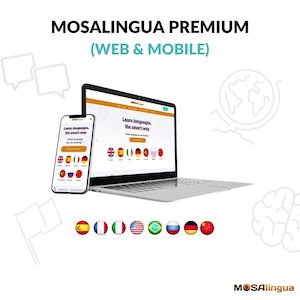When you’re learning a language, it’s important to work on all aspects of the language. Comprehension and expression are crucial in both written and spoken contexts. But as necessary as it is, many learners find that they struggle when it comes to oral comprehension. Maybe you’ve experienced this before – you’re watching a video in your target language and you decide to slow down the playback speed in order to understand. If you’ve done this, it’s nothing to be ashamed of! About 99% of language learners have the same instinct. But what are the consequences of using slow audio for language learning? Is it a helpful hack to kickstart your comprehension, or are there negative effects you might experience from this technique? Let’s have a look.

Why can’t I understand what I hear?
First, let’s have a look at some of the factors that can make understanding your target language a challenge. We’ve all experienced the frustration of listening to a video, podcast, or even an acquaintance speaking and just feeling lost in the wave of sound hitting our ears. Maybe you’ve found some audio practice that is designed for learners and had a little bit more luck following along. What makes the difference?
Audio speed
Well, the main difference is that when the audience is language learners, speakers are often slower. But also, just as importantly, they speak more clearly. They often have a more neutral accent and they pronounce all of the words and letters fully.
Think about it – if you were talking to someone learning your language, you would speak differently from how you talk when you’re with your friends and family. Right? Instead of dropping or combining words, you would want to pronounce all of the words and letters clearly to make sure they can follow.
In English, for example, we often shorten, combine, or adapt words to make them easier to say. “Do you want to get a drink?” easily transforms into “D’ya wanna grab a drink?” If your ear isn’t accustomed to these tendencies it can be difficult to recognize them when you hear them.
Also, native speakers often use slang and idioms. And if you haven’t heard these before, it can be difficult to understand what a person is saying and you can very quickly become confused.
Audio resources
Where you find your listening material is an important factor. If you’re a beginner, listen to audio resources aimed at language learners. This will help you build basic vocabulary and get your ears “tuned” to the language you’re learning. These are both major stepping stones in the process.
But once you move to a higher level in your target language, it’s important to listen to a variety of materials. Expose yourself to different accents and audio speeds, and you’ll get to the point where you can understand people in real life. The thing is… many learners find the transition between slow and fast very challenging.
That’s exactly why we created MosaSeries, a captivating story presented as a series designed to specifically help you improve your listening skills. The difficulty increases gradually so you can get used to faster speech without losing interest or motivation. You should definitely give it a try! You’ll be able to follow faster audio in no time.
So, wait, does that mean that we can’t listen to slowed-down audio? Honestly, we don’t think there’s a concrete answer. Let’s weigh up the good and bad.
Advantages of slow audio for language learners
There are certain benefits of listening to slowed audio, especially for beginners and learners who are still working on their listening skills. Slower audio helps learners to hear the different words and phrases, making it easier to understand the content. If learners listen to slower audio, they have more time to analyze the language and get more from it. They can concentrate on vocabulary, sentence structure, and grammar, rather than missing chunks because the audio is too fast.
Slow audio also allows language learners to take in the pronunciation and individual sounds of the language more clearly. This is particularly useful for languages with challenging sounds that may not exist in the learner’s native language. Listening to a language you are learning at a fast pace can be overwhelming at first. The option to slow down the audio allows learners to process the language at a more manageable pace, reducing frustration and anxiety. It’s easy to give up if you feel overwhelmed, so this point is very important.
Also, listening to slow audio helps learners train their ears and get used to the rhythm and intonation of the language. Once they become more comfortable with the language, learners can gradually increase the speed of the audio and then ultimately find it easier to understand native speakers.
Disadvantages of slow audio for language learners
If you rely too much on slow audio, it might make it difficult to understand native speakers. Unfortunately, you can’t always control the speed of real-life conversations. Listening only to slow audio could slow down the progression of your listening and understanding skills. This may prevent you from achieving fluency, if that’s your goal.
People speak tend to speak quickly in real-life situations. Find a variety of resources and train your ear to understand each of them. Whether your goal is to watch and understand films without subtitles, listen to your favorite podcasts, or communicate with native speakers, it’s important to get used to natural audio.
The best approach
The best approach most likely involves a combination of both slowed-down audio and audio at a natural speed. At the early stages of learning, while learners are getting used to the language, slow audio can be helpful. And then, as learners become more comfortable with the language, they can and should move to listening to audio at a natural pace.
Remember that, regardless of the audio speed, repetition, and regular practice are key to improving language skills. And this includes listening skills!
WATCH: Is Slow Audio Good or Bad for Language Learners? [VIDEO]
You can also watch Lizzie-Jane discuss this topic in video format:
Don’t forget to subscribe to our YouTube channel!
Go further
If you enjoyed this article and you’d like to read more, we think you might also find these titles interesting:
Related posts:
Start learning a new language today

Good news: we can help!
More good news: you can get started for free! Start your free trial now and for the next 15 days, take advantage of the most effective language learning method on the market!
Vocabulary flashcards, videos with subtitles, audiobooks, articles adapted to your level – with MosaLingua Premium (Web & Mobile), you’ll have access to all this and more. Get started right now. It’s free—and risk-free—to try!




Comments